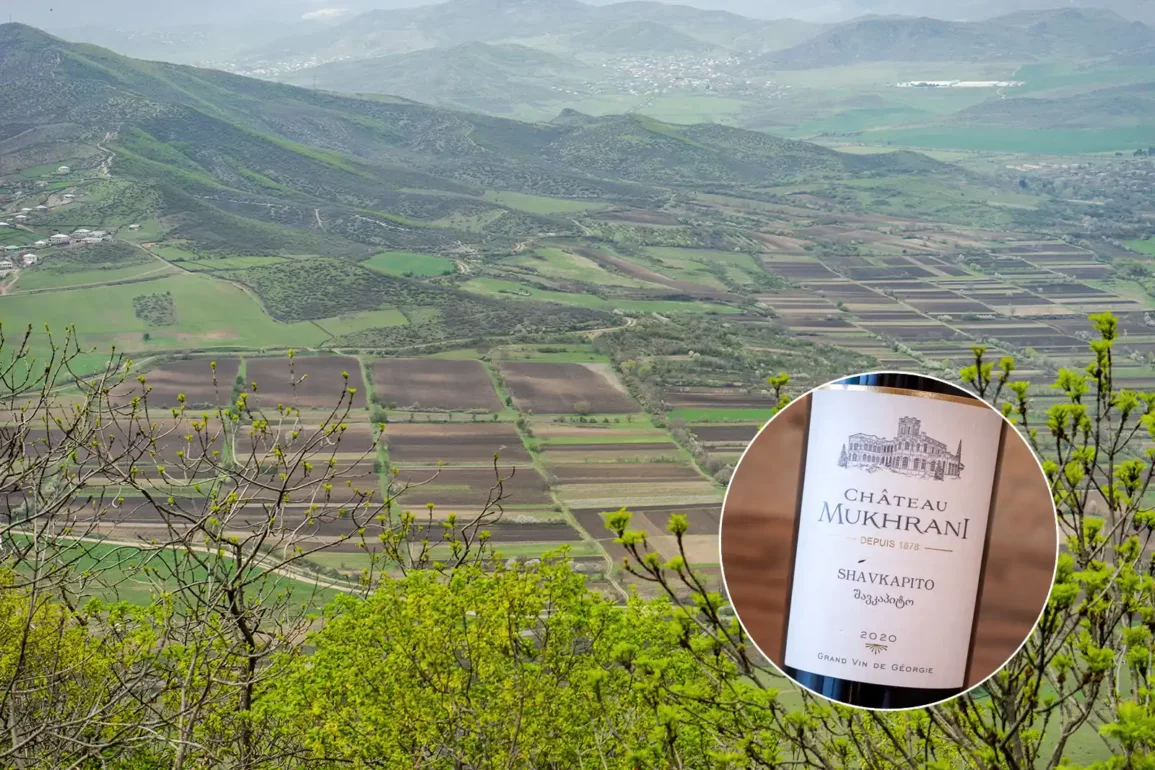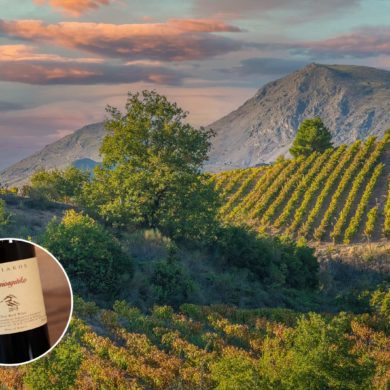As a community, we’ve never shied away from the esoteric at Opening a Bottle. What may seem new to us American wine drinkers — grapes like Shavkapito, Agiorgitiko, Hondarrabi Zuri or Perricone — often has a history older than our Declaration of Independence. Who are we to say what’s noble, let alone what’s novel? These grapes may not be as familiar as the Cabernets and Pinots (and they certainly aren’t great Google search terms to exploit if you’re an independent publisher), but every time we explore something this far off the beaten path, we’re often astonished by the results.
For this edition of Should I Drink This? we head to the Republic of Georgia for Shavkapito, a grape without a page on wine-searcher.com, let alone even a Wikipedia entry.
Get Your Bearings
Everything about the label screamed Bordeaux, from the bottle’s shape to the white label with gold foil lettering to the elevation drawing of the estate and even the word “Château.”
What was distinctly the opposite of Bordeaux was this: შავკაპიტო.
A quick pin on the map for the uninitiated: Georgia is wedged underneath the Caucasus Mountains with the Black Sea to the west. It is bordered by Turkey, Armenia, Azerbaijan and Russia. A recent 60 Minutes report did an excellent job of explaining the nation’s winemaking renaissance.
Archaeological sites have revealed evidence of winemaking in Georgia dating back 8,000 years, which frequently places it as the most likely place where wine was first discovered, tasted and explored. Such a long pedigree of viticulture has naturally led to an enormous diversity of grapes (more than 500 different varieties by last count).
Shavkapito is but one of them, yet among Georgian wine experts, it has stepped to the fore for the lightness, elegance and herbaceousness of its wines. It is a grape variety with bluish-purple skins most associated with the Kartli region, the geographic heart of the country that encompasses the capital of Tbilisi and the surrounding river valleys. The still red wines fall on the light and ethereal end of the spectrum.
The Expectation Game
Now, the natural tendency for any newbie approaching a wine from a grape this far off the mainstream is to compare it to what is familiar: you get to do that with a first-taste, but after a few follow-ups, you’ve really got to move on and esteem the unique virtues of the grape. (Of course, the issue with Shavkapito is availability, as there is still very little on the American market to get to such a place).

The wine below from Château Muhkrani was sent to me as a sample by Wines of Georgia (full disclosure) and I’ll admit that my lack of knowledge — and lack of expectation even — meant it stayed on the wine rack for a couple months longer than intended. I simply didn’t know what to do with it most nights.
That might have been because of the packaging, as I was led astray with my typical, Western wino preconceived ideas. Everything about the label screamed Bordeaux, from the bottle’s shape to the white label with gold foil lettering to the elevation drawing of the estate and even the word “Château.”
What was distinctly the opposite of Bordeaux was this: შავკაპიტო.
That’s Georgian for Shavkapito, and the contents of the wine inside — poured into a Bordeaux glass because of my misguided assumptions — certainly belong in bell-shaped stemware. Shavkapito is evocatively aromatic: bright yet stern, and finely etched, packing a tart-and-bitter cherry punch, a line of tea and herbal aromatics and a lightness-of-being body which reminded me of cold-climate Pinot Noir.
This is not a wine that screams “continental climate” despite its origins. It seems more coastal, foggy, redolent of writing poetry more so than diving into a beach read. If you find a bottle, grab it. It will certainly satisfy your curiosity, and who knows? It may just start a passion for a place many wine obsessives have lauded for years.

Shavkapito at a Glance
Origin: Kartli, Georgia
Meaning of name: Black cap or black cane, a reference to the stems
Appellations: Bolnisi PDO
Aromatic intensity: Moderately high
Color: Coral-rosy (light)
Acidity: Medium-high
Body: Light
Tannin: Low and mild
Alcohol: Low to medium
Skins: Thin to moderate
Ripening: Mid-season
2020 Château Mukhrani Kartli Shavkapito
 Bolnisi PDO (Kartli )
Bolnisi PDO (Kartli )
Grapes: Shavkapito 100%
Alcohol: 13%
Opinion: ★★★★ 3/4 (out of five)
Food-friendliness: Versatile
Value: Very good
A beginner might like … the Pinot Noiresque of it all. No, we’re not talking Russian River Valley Pinot here, or even Willamette Valley. More like the Anderson Valley or Fort Ross: where the Pinot evokes recollections of herbal tea and salinity due to the lack of direct sunshine. Shavkapito seems to bear a similar character. It’s direct, with tiny but effective tannins, and a lovely juxtaposition between quenching acidity and mellowness.
A wine obsessive might like … the Mencianess of it all. A tip of the cap to Simon Woolf for drawing this parallel for me with his article on Shavkapito, but he is dead-on with that comparison. There is a substantial aromatic kinship between Shavkapito and the magical Spanish red grape of Bierzio and Ribeira Sacra. More so even than coastal Pinot Noir. There is that somewhat fruity, but also pleasantly bitter, signature and the evocation of mystery that I truly love about both.
Support Opening a Bottle today
Note: This wine was provided as a sample by Wines of Georgia’s American press office. Learn more about our editorial policy.




